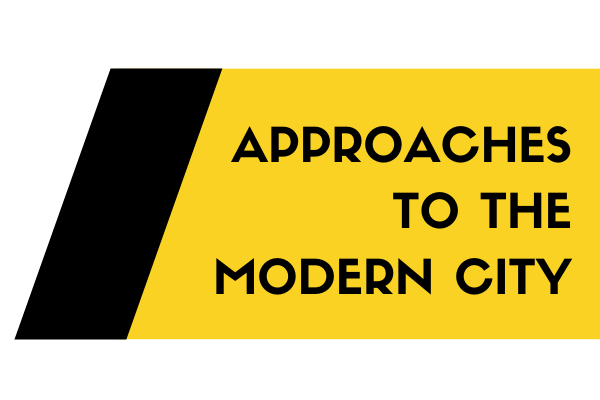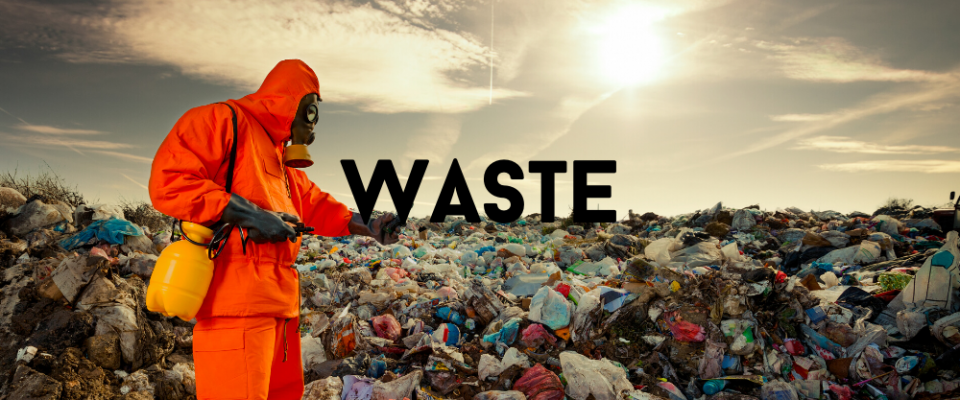By Sonia Su
Questions
How has Kaohsiung transformed its waste management and recycling systems? What does the circular economy mean for Taiwan?
Discussion
Throughout Taiwan, taking out the trash is a community affair. In Kaohsiung, musical garbage trucks come around 5 p.m. and again around 9 p.m., five days a week. Residents gather on the streets, displaying to their neighbors that they are indeed performing their duty and keeping trash off the ground. But the issue of waste has not always been so orderly.
During the 1990s, Taiwan not only was consolidating its democracy, but also becoming an industrial powerhouse as one of the Four Asian Tigers. In 1990, Kaohsiung residents staged a record-breaking 37-day demonstration, protesting against the city government for its continued use of a landfill after its lease had expired. For years, nearby residents had been suffering from the consequences of air and ground-water pollution. By 1993, Taiwan had a trash collection rate of only 70 percent, meaning the remaining 30 percent of waste was left on the streets or burnt (Maynard 2018). Three years later, hundreds of Kaohsiung residents, facing police in riot gear, again blocked the entrances to the Hsichingpu landfill. The government’s promises had been left unfulfilled, and the residents’ “not in my backyard” (NIMBY) mindset remained as strong as ever. (City councilors ultimately did approve of a budget for two incinerators.) Similar protests popped up across the country, as about two-thirds of its landfills were approaching or had already reached full capacity (“What a Waste” 1996).
What could explain Taiwan’s piling infamy as a “Garbage Island”, during a time when democratic governance was beginning to flourish? In 1996, Edward M.Y. Wu, Kaohsiung’s then commissioner of the Department of Environmental Protection, blamed vested interest groups hindering “waste disposal and treatment plans for political or economic reasons”:
“The administration couldn’t get the public support it needed. … That’s our country’s problem. All Kaohsiung city councilors are well educated; they know that the only way to solve the garbage problem is to build incinerators. But they boycott the budget for political reasons. They claim they have to do it, because their constituents are opposed” (“What a Waste” 1996).
As such, there were two NIMBY issues: opposition to the landfill, and opposition to the incinerators. Hazardous industrial waste posed an even bigger problem, as irresponsible practices led to fatal consequences, such as in 1994, when a Kaohsiung worker was killed and another injured when an illegally buried barrel of hazardous waste was broken, releasing poisonous gas (“What a Waste” 1996). In fact, Kaohsiung has long been known for processing and high-tech industries, such as steel-making, shipbuilding, and petrochemicals (Tsai 2019).
Fast forward to 2020: Taiwan has one of the highest recycling rates in the world, and household waste has dropped by 66 percent to one of the lowest in the world per capita (Ngerng 2019). Taiwan boasts a strong regulatory framework that emphasizes a circular economy, or “zero waste,” and its efforts have not gone unnoticed. Various international media outlets have touted the country’s unique waste management system, highlighting—for example—Taipei’s more than 4,000 garbage pickup spots, where residents must use special blue bags for trash, while recycling is free to encourage more recycling and less trash (Bush 2019). In 2018, Taiwan’s household waste per capita stood at 1.13 kilograms, compared to 2.04 kilograms in the United States and 1.54 kilograms in Australia; meanwhile, only Korea and Japan produce less trash per person, at 1.06 and 0.93 kilograms, respectively (Rickards 2019). In Kaohsiung, recycling rates have hovered around 55 percent over the past few years (“2018 Kaohsiung City”).
The process started from the implementation of the national Municipal Waste Disposal Plan in 1984, with subsequent laws and regulations introduced in the 1990s to promote the “zero waste” and recycling. The role of civil society in community empowerment campaigns, as well as grassroots groups, is credited with the transition from NIMBY to YIMBY (“Yes in My Backyard”) (Wong 2017). In such cases, participatory collaboration between the local community and the government allowed for the successful implementation of polluting projects—which previously were dominated by environmental protests and reactive, ineffective government compensation. Non-governmental organizations, such as Taiwan Watch Institute and the Green Citizens’ Action Alliance, helped to support grassroots activism, changing the trajectory of Taiwan’s NIMBY protests (Wong 2017).
Furthermore, since 1987, the Environmental Protection Administration (EPA) has been promoting the Four-in-One Recycling Program, holding various stakeholders responsible. As Rickards has observed, such program meant Taiwan was one of the leading countries to adopt “extended producer responsibility,” a strategy for both producers and manufacturers to recognize their liability and the environmental costs for the lifespan of their products. The stakeholders include community residents, recycling industries, and local authorities, with a recycling fund that levies fees on manufacturers and importers (“Recycling Regulations” 2012).
Moreover, after the implementation of “Keep Trash Off the Ground” (KOTG) measure, Taiwan’s waste has been reduced by more than two-thirds, of which about 55 percent is recycled—compared to five percent previously (Bush 2019). The system has changed citizens’ mindsets and behaviors regarding waste, further contributing to the concept of a circular economy. Lai Ying-ying, head of the Taiwan EPA’s waste management department, has said, “For a policy like this to work, you have to make each one responsible for his personal consumption. You need waste disposal to sit firmly in the public consciousness” (Rossi 2018).
KTOG has helped to eliminate around 10,000 garbage piles from Kaohsiung, with citywide implementation by July 1, 1999 (Chao 2008). The musical garbage trucks served as channels between the residents and the waste collection crews, allowing for increased contact and understanding of garbage sorting and recycling. A time series analysis conducted for the city between 1997 and 2005 showed further growth in recyclables after the KOTG measure (Chao 2008). The same analysis finds that “increasing collection frequency has a marginal effect on the increase of the amount of recyclables,” suggesting other policies, such as the per-bag trash collection fee, provide a stronger economic incentive for people to reduce their waste. Along with vigorous monitoring, fines of up to $200 in Kaohsiung help to ensure that recycling mandates are at near full compliance (Innes and Yang 2007).
Support for better waste management has also increased among the general public and civil society with organizations such as Tzu Chi Foundation (TCF) integrating religious beliefs with environmental protection (Wong 2019). Tzu Chi is a Buddhist Compassion Relief Foundation known for its elderly volunteers, who collect donated goods and recyclables at local neighborhoods (Sedaghat 2018). However, a study of employees of the Household Waste Collection Department in Kaohsiung finds that household waste collectors not only expose themselves to various bioaerosols and toxic materials, but the job also requires heavy labor. Such collection poses risks of developing chronic respiratory issues and musculoskeletal symptoms, as well as suffering injuries from sharp objects (Yang, et al. 2001). A 2018 report from Kaohsiung’s Environmental Protection Bureau dedicated a section to highlighting its efforts in employee safety and education (“2018 Environmental Administration Overview”). Yet, coordinated efforts to address the secondary market of collectors selling recyclables to brokers—a phenomenon throughout Asia and other developing regions—remain to be seen.
Furthermore, challenges persist, as China’s ban on the import of garbage in late 2017 has shifted the burden of foreign waste to Taiwan. The amount of imported plastic doubled between 2017 and 2018, with recent reports revealing that increasing costs of recycling ultimately lead to an increase in incineration (Wong 2019). Some question how much that goes into the recycling stream actually gets recycled. Others argue that the biggest challenge is developing a system for the circular economy that captures the consumption cycle and logistics (Su 2018).
Nevertheless, the relative success of Taiwan’s waste management transformation can be attributed to three principles working in tandem: 1) putting a price on garbage, 2) enforcing laws and regulations, as well as fines, and 3) disseminating knowledge as part of a cultural and educational movement (“F-16Vs & Trash Talk”). Taiwan’s process of promoting a circular economy for waste management has seen the most significant improvement in “reduced use of plastics, plastic recycling, MSW [municipal solid waste] incineration management, e-waste recycling, and waste to energy projects” (Su 2018). In 2019, Kaohsiung hosted the Asia Pacific Circular Economy Roundtable, showing increasing dedication to expanding the country’s push for a circular economy beyond just “zero waste” (“2019 Asia Pacific”).
Looking forward, the national government has proposed a ten-year action plan, covering improving the education of resource management, environmentally conscious designs, technological applications, and environmental governance. Compulsory environmental education was introduced in 2011, with the Environmental Education Act requiring all high school students and government employees to attend at least four hours of related courses (Rickards 2019). The result has been heightened awareness among the general public. While other countries may not be as keen on implementing singing garbage trucks, Taiwan indeed seems to provide a good model for others in the early stages of developing waste management and recycling systems (Chang, et al. 2005).

